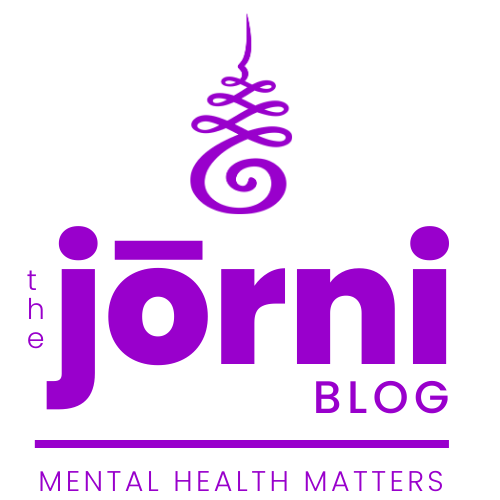Unveiling the Power of Specialized Yoga Practices
Let's dive right into the transformative world of yoga therapy and trauma-sensitive yoga: two areas that deserve more attention than they often receive. These aren't just any regular yoga practices. They are specialized forms of therapeutic intervention that focus on addressing trauma and enhancing overall wellbeing. The aim is not just physical flexibility but mental and emotional resilience, empowering us to heal and reconnect with ourselves.
The approaches used in yoga therapy and trauma-sensitive yoga go beyond traditional yoga. They are tailored to work with the complex issues that individuals with past traumas or current mental health issues face. These techniques work on multiple levels - mental, emotional, and physical - to create a holistic healing experience. Whether we're trying to cope with anxiety, depression, or the lingering effects of trauma, these practices offer specific methodologies that are customized to our needs.
The importance of these specialized yoga practices cannot be overstated. They offer an inclusive, safe space for healing, enabling us to move past the challenges that keep us from living a fulfilling life. So, as we explore the different aspects of these remarkable practices, we encourage you to think of them not as alternative wellness options but as validated avenues for achieving a better quality of life.
“The attitude of gratitude is the highest yoga."
- Yogi Bhajan
The Expert Behind the Wisdom
Anne-Laure Peaucelle is a highly skilled yoga therapist and facilitator specializing in trauma-sensitive yoga. Her focus is on mental and emotional health, and she extends her expertise to help her students and clients navigate a spectrum of challenges including anxiety, depression, burnout, and trauma recovery.

At the heart of Anne-Laure's work is an unwavering commitment to assist in re-establishing a secure connection with our bodies. This fosters an internal environment of safety and trust, two essential components for anyone embarking on a healing journey.
The Profound Impact of Yoga Therapy
When discussing yoga therapy, it's crucial to acknowledge its multifaceted benefits, which stretch far beyond general yoga practices. This form of yoga targets specific needs and offers tailored experiences, making it a powerful resource for those who are navigating the path of healing from trauma. Let's delve deeper into the aspects that contribute to its efficacy.
A Catalyst for Healing
Yoga therapy is designed to address the unique needs of each individual student, making it far from a generic solution. By recognizing the unique circumstances and sensitivities of those dealing with trauma, it provides a pathway for genuine healing. It doesn't just act as a catalyst for momentary relief but initiates a cycle of transformation that can significantly impact our overall wellbeing. This process encourages autonomy, allowing us to regain a sense of control that may have been compromised due to past experiences.
Cultivating Resilience
The methods used in yoga therapy go beyond mere symptom relief; they aim to fortify our emotional and mental resilience. By focusing on techniques that develop coping skills, this approach reduces vulnerability to triggers and equips us to better manage life's challenges. Ultimately, it's not just a stop-gap measure but a robust framework for creating long-term emotional and mental stability.

Connection and Safety
Safety and trust are at the core of yoga therapy. The practice creates a secure environment where we can freely explore our physical and emotional states without the fear of judgment. This non-threatening atmosphere allows us to re-establish a meaningful connection with our bodies, an essential step for anyone working through the complexities of trauma. By fostering this secure environment, trauma-sensitive yoga transcends mere physical exercise to become a potent tool for holistic transformation.
The practice offers more than just physical postures; it provides a complete, supportive framework for mental, emotional, and physical growth. Therefore, for those grappling with the lingering effects of trauma, incorporating trauma-sensitive yoga into our wellness journey can prove to be a life-altering decision.
An Underrated Asset
While it might seem like an extension of traditional yoga, yoga therapy offers specialized approaches that can have profound impacts on our mental, emotional, and physical health. But what makes it stand apart from the more well-known yoga practices? Here's a deeper look at the elements that make yoga therapy a crucial part of holistic wellness.
Beyond Symptom Management
Contrary to common perception, yoga therapy isn't just about symptom management; it often focuses on identifying and treating root causes. Unlike conventional treatments that may only scratch the surface, yoga therapy dives deep into underlying issues. It's not just about addressing the presenting symptoms like stress or insomnia but understanding what's fundamentally causing them - be it hormonal imbalances, repressed emotions, or even past traumas. By focusing on the root, yoga therapy seeks to provide a long-lasting solution rather than a temporary fix.
Biopsychosocial Integration
Yoga therapy extends its reach beyond the individual to consider the biopsychosocial factors affecting our wellbeing. This means that our environment, social interactions, and even occupational stressors are considered when developing a personalized yoga therapy program. It isn't just about what's happening within us, but also how our external world impacts our internal state. By addressing these interconnected factors, yoga therapy provides a multi-dimensional approach that is often missing in other approaches.

Mindfulness in Motion
Though it's known that yoga therapy employs a variety of techniques, one less-talked-about aspect is its use of “mindfulness in motion”. Traditional mindfulness practices focus on stillness and meditation, but yoga therapy incorporates mindfulness into active movement. This integration allows us to become aware of our body's subtleties, from the rhythm of our breath to the tension in our muscles, even as we engage in physical activity. This kind of awareness forms the bedrock for cognitive restructuring, aiding in breaking negative thought patterns and fostering a sense of emotional equilibrium.
The unique facets of yoga therapy illustrate its profound potential as a holistic treatment modality. From addressing the root causes of issues to considering the biopsychosocial aspects of wellbeing, and introducing the concept of “mindfulness in motion”, yoga therapy offers a well-rounded, multifaceted approach to health. As we strive for a more integrated understanding of wellness, recognizing and utilizing the depth of yoga therapy can serve as a transformative asset in our health journey.
The Interplay of Neuroscience and Yoga Therapy
Another aspect of yoga therapy that often goes unnoticed is its relationship with neuroscience. While it's tempting to consider yoga therapy solely as a set of traditional practices with ancient origins, the reality is that it also operates in alignment with modern scientific understandings of the brain and nervous system. Here's a glimpse into how yoga therapy integrates neuroscience to optimize its impact.
Neural Plasticity and Adaptive Responses
One of the groundbreaking revelations in neuroscience is the concept of neuroplasticity - the brain's ability to reorganize itself by forming new neural connections. Yoga therapy leverages this ability by introducing practices that stimulate adaptive neural responses. Whether it's through focused breathing that activates the parasympathetic nervous system or postures that release stored tension, these exercises aim to rewrite neural patterns. The end result is not just temporary relief but a fundamental change in how the brain responds to stress, pain, and emotional challenges.
Emotional Regulation and the Limbic System
The limbic system, the emotional center of the brain, is another area that yoga therapy aims to influence. Emotional dysregulation is often a significant component of mental health challenges like anxiety and depression. By incorporating techniques that calm the amygdala - the alarm center in the limbic system - yoga therapy facilitates better emotional regulation. Breathwork, meditation, and specific postures serve as modulators that can temper extreme emotional responses, offering a more balanced physical and mental state.

The Gut-Brain Axis and Holistic Health
Recent advances in neuroscience and microbiology have shed light on the gut-brain axis, a bidirectional communication channel between the digestive system and the brain. Stress and emotional turmoil often manifest as gastrointestinal issues and vice versa. Yoga therapy addresses this interconnectedness through practices that promote gut health, such as specific twists and breathing techniques. This focus on the gut-brain axis illustrates how yoga therapy adopts a holistic perspective that goes beyond mere mental or physical wellbeing to encompass the entire body-mind ecosystem.
This integration of neuroscience not only legitimizes yoga therapy's effectiveness but also broadens its scope. From enhancing neuroplasticity to influencing emotional regulation and even incorporating a focus on gut health, yoga therapy's alignment with neuroscience offers a sophisticated, science-backed approach to holistic healing. As we expand our understanding of what wellness truly encompasses, the incorporation of such scientifically grounded methodologies makes yoga therapy an even more compelling option for comprehensive, holistic health.
The TAKEAWAY
The significance of trauma-sensitive yoga and yoga therapy lies in their potential to serve as a cornerstone in an individualized healthcare approach. In a world where cookie-cutter solutions are often prescribed for complex problems, these practices offer a personalized path to wellbeing. They consider us in our entirety - mind, body, and spirit - and offer nuanced techniques that are adaptable and versatile. This matters because healthcare should be as unique as each of us, and these practices offer a pathway to such customized care.
Moreover, the integration of scientific principles, like neuroscience, into these yoga practices offers a melding of ancient wisdom and modern science. This symbiosis elevates these therapeutic methods beyond being a mere alternative or complementary therapy; it makes them a robust, evidence-backed solution that can stand on its own or work in tandem with other forms of medical treatment. It's a way to bring harmony between different aspects of wellbeing, bridging gaps that sometimes exist in traditional healthcare settings.

Ultimately, the value of trauma-sensitive yoga and yoga therapy lies in empowering us to take control of our healing journey. When we become active participants in our wellness, the results are often far-reaching and long-lasting. The journey toward health and wellbeing is not a linear path, and these practices offer the flexibility and adaptability needed for real, sustained progress.
That’s why understanding these therapies is not just for those affected by trauma or health conditions; it's relevant for anyone invested in fostering a life of holistic wellbeing.
